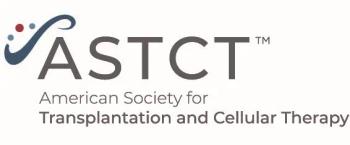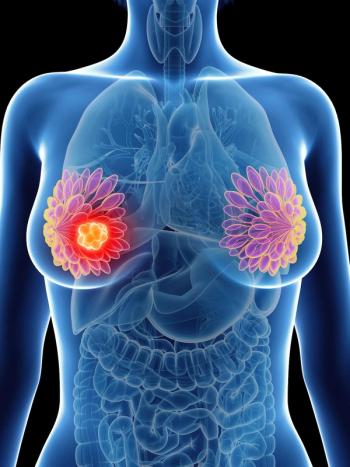
- ONCOLOGY Vol 27 No 8
- Volume 27
- Issue 8
Rare Myelomas: Sometimes When You Hear Hooves, It’s a Zebra...
The use of newer methods of disease assessment that focus on minimal residual disease may facilitate the long-term evaluation of IgD and IgE myeloma patients, even if the rare Ig subtype is not identified at diagnosis.
The review by Drs. Pandey and Kyle[1] highlights important facets of the management and diagnosis of rare subtypes of myeloma. Immunoglobulin D multiple myeloma (IgD MM) affects less than 2% of all patients with myeloma, and only about 50 cases of immunoglobulin E (IgE) MM have been described in the literature.[2,3] Based upon the rarity of these subtypes, few series of either subtype are reported, and most only when they present to tertiary referral centers; as a consequence, IgD MM and IgE MM are subject to referral bias, rendering their true natural history and frequency much more challenging to interpret. Drs. Pandey and Kyle raise some important issues. The use of newer methods of disease assessment that focus on minimal residual disease (MRD) may facilitate the long-term evaluation of these myeloma patients, even if the rare Ig subtype is not identified at diagnosis.
Diagnosis and prognosis
The authors have appropriately raised the most important initial issue: early recognition and diagnosis of IgD MM and IgE MM. This is often limited, as there may be no definitive M-protein band as with other Ig subtypes, and immunofixation for IgD and IgE are not routinely performed. As a consequence, the diagnosis can easily be missed or misclassified as light chain–only disease.[4]
The issue of the natural history of IgD MM remains a challenging one to interpret. IgD MM is believed to have more aggressive clinical features and worse prognosis than other Ig subtypes, but poor survival of these patients may be associated with problems related to delayed diagnosis.[5,6] It is difficult to assess risk and prognosis in these patients using historical data. Because of the rarity of IgD MM, the Durie-Salmon staging system did not account for this subtype. The International Staging System (ISS) score is also difficult to apply in this setting, because almost half of patients with IgD MM have renal impairment at diagnosis; therefore, the elevated β2-microglobulin level may be related to poor clearance caused by renal failure, rather than to the actual burden of disease.[7] The Shimamoto staging system also appears to be limited in IgD MM, due to the high frequency of lambda chain–type disease in these patients.[8]
However, while we have historically believed that immunoglobulin A (IgA) MM carries with it a worse prognosis, the poor outcomes associated with IgA myeloma have been linked to a higher incidence of immunoglobulin H (IgH) translocations known to be associated with poorer outcomes.[9-14] Thus, the specific Ig isotype is not the “harbinger of doom”; rather, it is the genetic translocations that can be associated with certain Ig isotypes that represent the real issue of prognostic importance. This concept of genetics being used to assign risk is more fitting with modern approaches to disease management, especially as one considers the use of maintenance therapy or chooses initial induction therapy.[15,16]
Among patients with IgD MM, owing to its low frequency, little is known about the impact of cytogenetic abnormalities on the outcome. Kim et al first reported a high frequency of initial chromosomal abnormalities in patients with IgD MM. They found that 53% of patients presented chromosomal abnormalities, with 39% of those patients showing complex chromosomal abnormalities, so these observed cytogenetic features may contribute to poor prognosis in patients with IgD MM.[17]
The debate surrounding identification of prognostic factors in myeloma comes at the very time when important advances in understanding the biology of the disease-including the complexity and dynamics of the genomic landscape of myeloma-are leading some physicians to believe risk should be accounted for when designing long-term treatment approaches, especially as we design maintenance approaches post transplant.[18] In patients with IgD MM, more than in other subtypes, the underlying tumor biology responsible for aggressive clinical features and poor prognosis remains to be determined. In our opinion, IgD MM should be considered a rare subgroup of myeloma that can be associated with aggressive characteristics, but it should be viewed through the lens of its associated genetic changes, rather than as a single parameter of poor outcome.
Treatment
With regard to treatment recommendations, limited information is available on the effectiveness of autologous stem cell transplantation (ASCT) or the impact of new drugs in these patients.
High-dose therapy (HDT) with ASCT for myeloma was developed in the 1980s, and since the mid-1990s it has been considered standard frontline treatment for younger patients with normal renal function.[19]
Patients with rare subtypes of myeloma seem to gain benefit from ASCT as well. A recent study illustrated that HDT/ASCT increased overall survival (OS) and progression-free survival (PFS) by 63% and 69%, respectively, compared with patients treated with conventional chemotherapy, although the small number of patients limited the statistical power of the analysis.[20]
The current use of proteasome inhibitors and immunomodulatory drugs is now changing the transplantation scenario in several ways. These agents are being employed in the pretransplant setting as part of induction regimens, with the objective of increasing the response rate prior to ASCT to achieve a high complete response (CR) rate. Additionally, they are being used in the post-transplant setting as consolidation or maintenance treatments.[19,21] Several studies have demonstrated that IgD MM is highly sensitive to novel agents such as bortezomib and thalidomide, leading our group and others to recommend that all patients with newly diagnosed myeloma receive aggressive induction with the “best” known therapy that has the highest likelihood of achieving a CR.[22-30]
Disease assessment
As with nonsecretory myeloma, the ability to effectively monitor disease response in patients with rare isotypes of myeloma is a major challenge. If the isotype is not identified at the early stages of diagnosis, then the presence of IgD MM or IgE MM may be missed throughout the course of the patient’s disease. Certainly identification of the correct Ig subtype at diagnosis is critical for assessing response, and even for identifying a CR using our conventional definition.[31] However, it should be noted that more recent disease-assessment methods, such as polymerase chain reaction (PCR), flow cytometry, and even DNA sequencing, may offer more effective assessment of minimal residual disease, and can be performed independently of the Ig subtype assessment.[32-34] Using flow cytometry alone, one is able to identify normal and abnormal plasma cells in the marrow, and if the Ig isotype is missed at diagnosis, this technique can detect even very small clones of malignant plasma cells that, because of sensitivity issues, are routinely not detected by serum protein electrophoresis (SPEP). Additionally, the combination of imaging (PET/CT) with MRD assessment is likely to further enhance low-level disease assessment and more likely to predict long-term outcomes.[35,36] A schema for incorporating MRD assessment using flow cytometry and imaging is being discussed by the International Myeloma Working Group, and once methods are standardized, it will likely be the next step in how we define a true complete remission.
In summary, patients with rare Ig isotype myeloma have benefited from the same improvements in biological assessment, treatment, and response assessment as those with other subtypes of myeloma. Correct identification of the issues central to improved patient management is of critical importance as we seek to ultimately cure myeloma, and it will depend on the broad application and utilization of more sensitive measures of disease response assessment. In the future, we will no longer consider myelomas as IgG, IgA, or IgD, but rather we will base their classification on the biological underpinnings leading to their malignant transformation. This will help us to better design treatment and maintenance strategies, with the goal of long-term control or eradication of this disease.
Financial Disclosure: Dr. Lonial serves as a scientific advisor to Celgene, Millennium, Novartis, Onyx, Bristol-Myers Squibb, and Sanofi. Dr. Gentili has no significant financial interest or other relationship with the manufacturers of any products or providers of any service mentioned in this article.
References:
References
1. Pandey S, Kyle RA. Unusual myelomas: a review of IgD and IgE variants. Oncology (Williston Park). 2013;27:798-803.
2. Blade J, Kyle RA. Nonsecretory myeloma, immunoglobulin D myeloma, and plasma cell leukemia. Hematol Oncol Clin North Am. 1999;13:1259-72.
3. Hagihara M, Hua J, Inoue M, et al. An unusual case of IgE-multiple myeloma presenting with systemic amyloidosis 2 years after cervical plasmacytoma resection. Int J Hematol. 2010;92:381-5.
4. Sinclair D. IgD myeloma: clinical, biological and laboratory features. Clin Lab. 2002;48:617-22.
5. Kuliszkiewicz-Janus M, Zimny A, Sokolska V, et al. Immunoglobulin D myeloma-problems with diagnosing and staging (own experience and literature review). Leuk Lymphoma. 2005;46:1029-37.
6. Maisnar V, Hájek R, Scudla V, et al. High-dose chemotherapy followed by autologous stem cell transplantation changes prognosis of IgD multiple myeloma. Bone Marrow Transplant. 2008;41:51-4.
7. Greip PR, San Miguel J, Durie BG, et al. International staging system for multiple myeloma. J Clin Oncol. 2005;23:3412-20.
8. Shimamoto Y, Anami Y, Yamaguchi M. A new risk grouping for IgD myeloma based on analysis of 165 Japanese patients. Eur J Haematol. 1991;47:262-7.
9. Correlation of abnormal immunoglobulin with clinical features of myeloma: a cooperative study by Acute Leukemia Group B. Arch Intern Med. 1975;135:46-52.
10. Matzner Y, Benbassat J, Polliack A. Prognostic factors in multiple myeloma: a retrospective study using conventional statistical methods and a computer program. Acta Haematol. 1978;60:257-68.
11. Fonseca R, Bergsagel PL, Drach J, et al. International Myeloma Working Group molecular classification of multiple myeloma: spotlight review. Leukemia. 2009;23:2210-21.
12. Fonseca R, Blood E, Rue M, et al. Clinical and biologic implications of recurrent genomic aberrations in myeloma. Blood. 2003;101:4569-75.
13. Neben K, Jauch A, Bertsch U, et al. Combining information regarding chromosomal aberrations t(4;14) and del(17p13) with the International Staging System classification allows stratification of myeloma patients undergoing autologous stem cell transplantation. Haematologica. 2010;95:1150-7.
14. Avet-Loiseau H, Attal M, Campion L, et al. Long-term analysis of the IFM 99 trials for myeloma: cytogenetic abnormalities [t(4;14), del(17p), 1q gains] play a major role in defining long-term survival. J Clin Oncol. 2012;30:1949-52.
15. Pineda-Roman M, Zangari M, Haessler J, et al. Sustained complete remissions in multiple myeloma linked to bortezomib in total therapy 3: comparison with total therapy 2. Br J Haematol. 2008;140:625-34.
16. Avet-Loiseau H, Leleu X, Roussel M, et al. Bortezomib plus dexamethasone induction improves outcome of patients with t(4;14) myeloma but not outcome of patients with del(17p). J Clin Oncol. 2010;28:4630-4.
17. Kim MK, Suh C, Lee DH, et al. Immunoglobulin D multiple myeloma: response to therapy, survival and prognostic factors in 75 patients. Ann Oncol. 2011;22:411-6.
18. Morgan GJ, Walker BA, Davies FE. The genetic architecture of multiple myeloma. Nat Rev Cancer. 2012;12:335-48.
19. Moreau P, Avet-Loiseau H, Harousseau JL, et al. Current trends in autologous stem-cell transplantation for myeloma in the era of novel therapies. J Clin Oncol. 2011;29:1898-906.
20. Pisani F, Petrucci MT, Giannarelli D, et al. IgD multiple myeloma a descriptive report of 17 cases: survival and response to therapy. J Exp Clin Cancer Res. 2012;31:17.
21. Cavo M, Rajkumar SV, Palumbo A, et al. International Myeloma Working Group consensus approach to the treatment of multiple myeloma patients who are candidates for autologous stem cell transplantation. Blood. 2011;117:6063-73.
22. Hayashi T, Yamaguchi I, Saitoh H, et al. Thalidomide treatment for immunoglobulin D multiple myeloma in a patient on chronic hemodialysis. Intern Med. 2003;42:605-8.
23. Schmielau J, Teschendorf C, Konig M, et al. Combination of bortezomib, thalidomide, and dexamethasone in the treatment of relapsed, refractory IgD multiple myeloma. Leuk Lymphoma. 2005;46:567-9.
24. Lonial S, Kaufman JL. The era of combination therapy in myeloma. J Clin Oncol. 2012;30:2434-6.
25. Kaufman JL, Nooka A, Vrana M, et al. Bortezomib, thalidomide, and dexamethasone as induction therapy for patients with symptomatic multiple myeloma: a retrospective study. Cancer. 2010;116:3143-51.
26. Sonneveld P, Schmidt-Wolf IGH, van der Holt B, et al. HOVON-65/GMMG-HD4 randomized phase III trial comparing bortezomib, doxorubicin, dexamethasone (PAD) vs VAD followed by high-dose melphalan (HDM) and maintenance with bortezomib or thalidomide in patients with newly diagnosed multiple myeloma (MM). Blood. 2010;116:abstr 40.
27. Reeder CB, Reece DE, Kukreti V, et al. Cyclophosphamide, bortezomib and dexamethasone induction for newly diagnosed multiple myeloma: high response rates in a phase II clinical trial. Leukemia. 2009;23:1337-41.
28. Cavo M, Tacchetti P, Patriarca F, et al. Bortezomib with thalidomide plus dexamethasone compared with thalidomide plus dexamethasone as induction therapy before, and consolidation therapy after, double autologous stem-cell transplantation in newly diagnosed multiple myeloma: a randomised phase 3 study. Lancet. 2010;376:2075-85.
29. Richardson PG, Weller E, Lonial S, et al. Lenalidomide, bortezomib, and dexamethasone combination therapy in patients with newly diagnosed multiple myeloma. Blood. 2010;116:679-86.
30. Jakubowiak AJ, Dytfeld D, Jagannath S, et al. Final results of a frontline phase 1/2 study of carfilzomib, lenalidomide, and low-dose dexamethasone (CRd) in multiple myeloma (MM). Blood. 2011;118:abstr 631.
31. Rajkumar SV, Harousseau J-L, Durie B, et al. Consensus recommendations for the uniform reporting of clinical trials: report of the International Myeloma Workshop Consensus Panel 1. Blood. 2011;117:4691-5.
32. Ladetto M, Pagliano G, Ferrero S, et al. Major tumor shrinking and persistent molecular remissions after consolidation with bortezomib, thalidomide, and dexamethasone in patients with autografted myeloma. J Clin Oncol. 2010;28:2077-84.
33. Paiva B, Martinez-Lopez J, Vidriales M, et al. Comparison of immunofixation, serum free light chain, and immunophenotyping for response evaluation and prognostication in multiple myeloma. J Clin Oncol. 2011;29:1627-33.
34. Nair B, Waheed S, Szymonifka J, et al. Immunoglobulin isotypes in multiple myeloma: laboratory correlates and prognostic implications in total therapy protocols. Br J Haematol. 2009;145:134-7.
35. Zamagni E, Nanni C, Patriarca F, et al. A prospective comparison of 18F-fluorodeoxyglucose positron emission tomography-computed tomography, magnetic resonance imaging and whole-body planar radiographs in the assessment of bone disease in newly diagnosed multiple myeloma. Haematologica. 2007;92:50-5.
36. Eliott B, Peti S, Osman K, et al. Combining FDG-PET/CT with laboratory data yields superior results for prediction of relapse in multiple myeloma. Eur J Haematol. 2011;86:289-98.
Articles in this issue
about 12 years ago
Biomarkers in Colon Cancer: The Chasm Between Expectations and Realityabout 12 years ago
Oral Oncolytics: Part 1-Financial, Adherence, and Management Challengesabout 12 years ago
Announcing a New Series: Understanding Unusual DysproteinemiasNewsletter
Stay up to date on recent advances in the multidisciplinary approach to cancer.



















































































